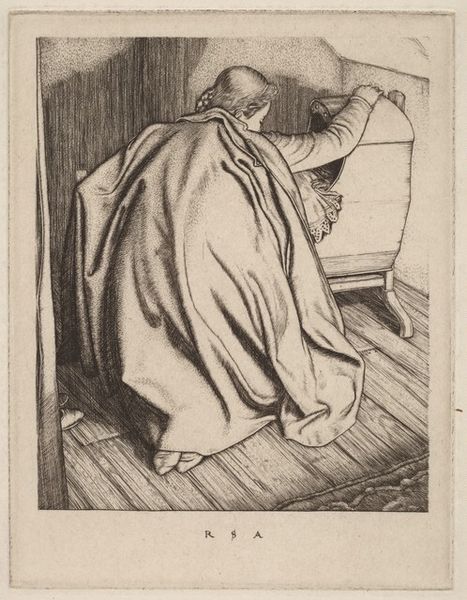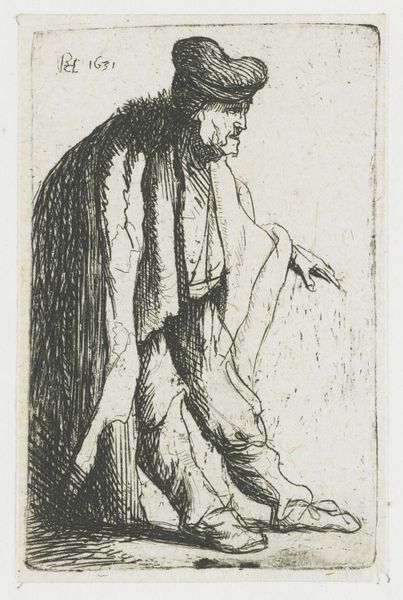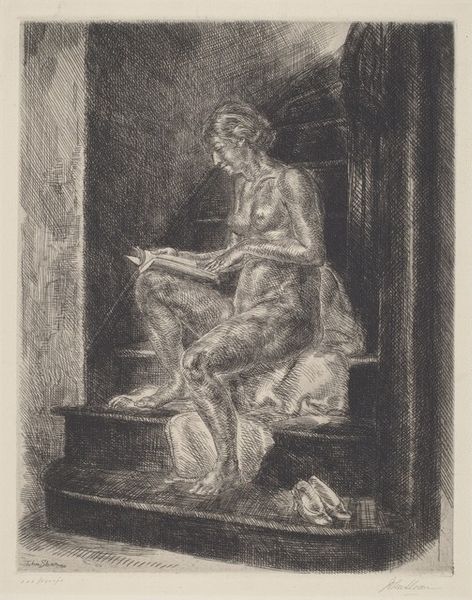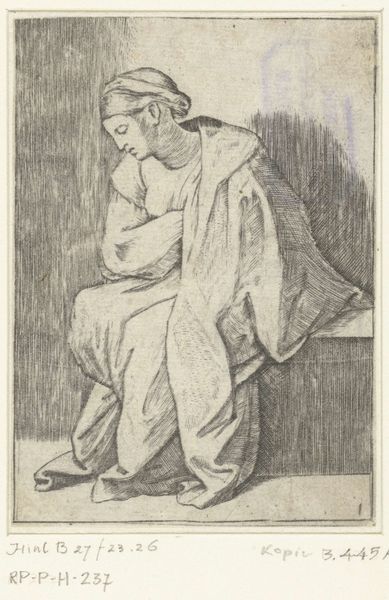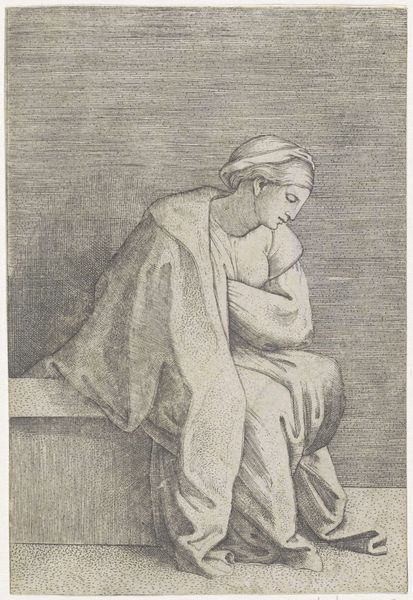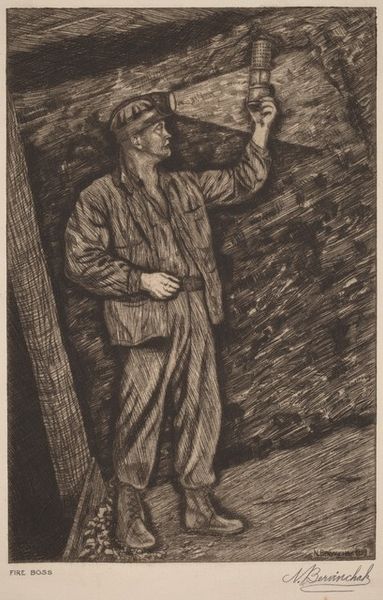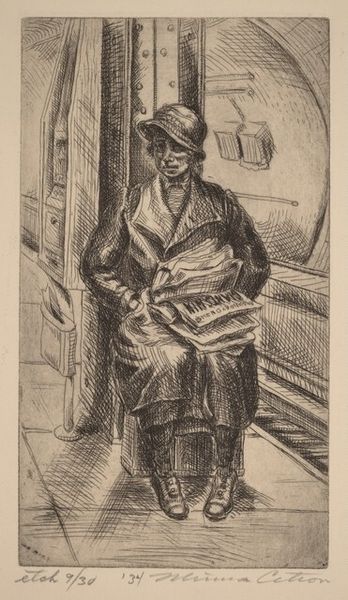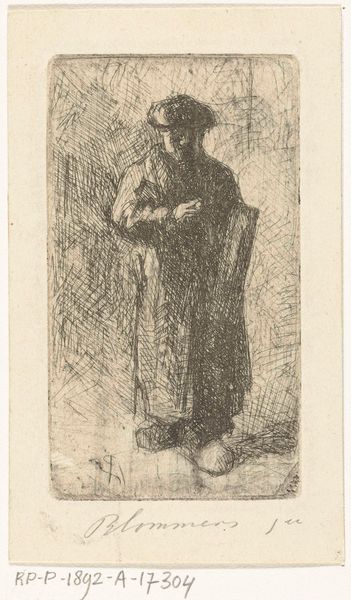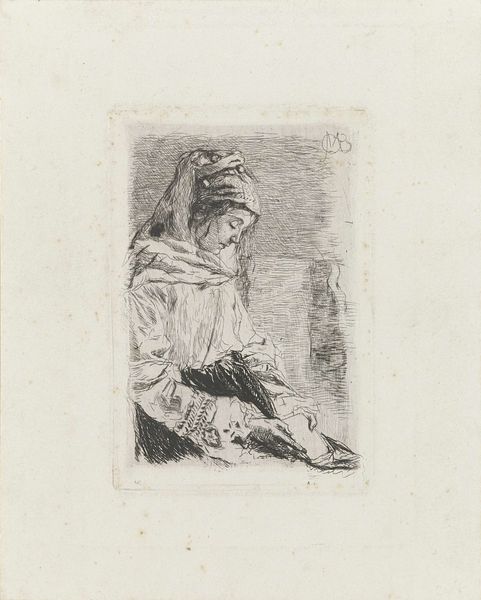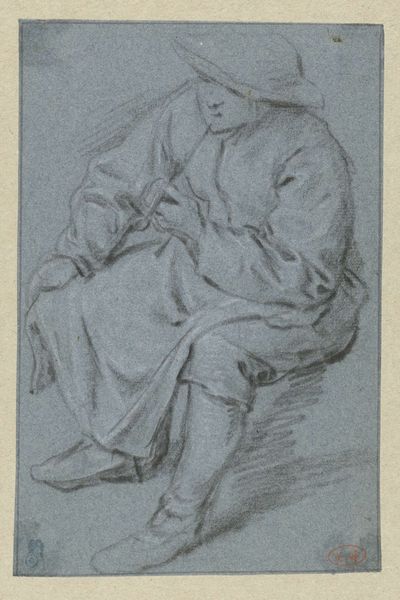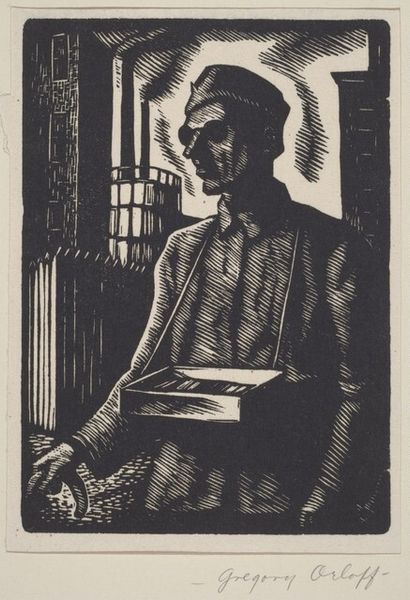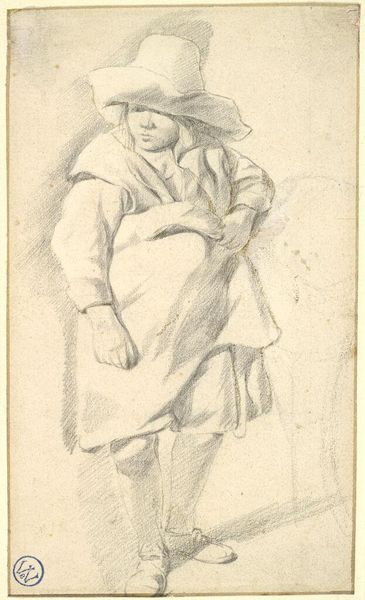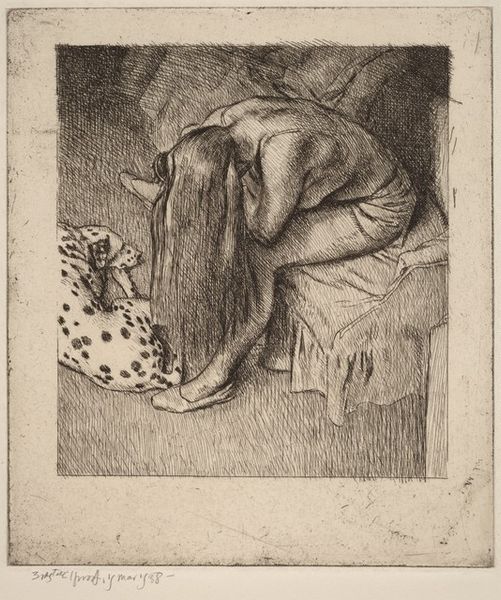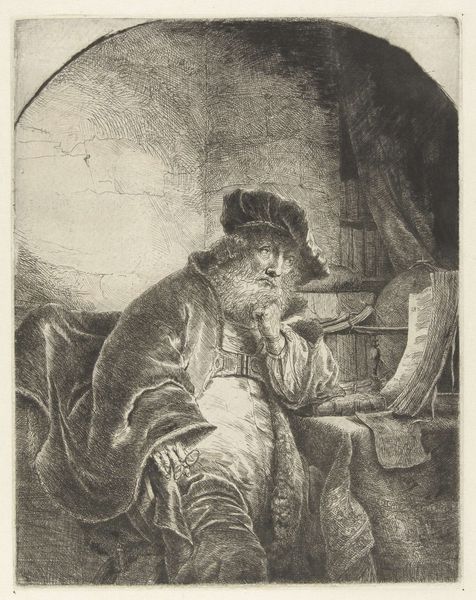
print, etching
#
portrait
# print
#
etching
#
mannerism
#
figuration
#
history-painting
Dimensions: height 100 mm, width 71 mm
Copyright: Rijks Museum: Open Domain
Editor: This etching from sometime between 1510 and 1575, "Zittende vrouw in overpeinzing" or "Seated woman in contemplation," really strikes me. It has a sense of loneliness and quietude, a contemplative mood. What stands out to you most? Curator: Immediately, I'm drawn to the lines, the meticulous, repetitive labor required to create this image. Consider the artist's hand: how many hours were spent etching these precise lines into the metal plate? How accessible would those materials and that skill be? Editor: So, you're focusing on the physical process rather than just the image itself? Curator: Absolutely! The social context is crucial. Who could afford such a print? Who would have access to the knowledge of etching? This wasn't simply a creative outpouring; it was a product of specific skills, resources, and, likely, a patronage system. Think about the etcher’s social status and their relationship to the commissioning party. This is a study in accessing culture, a challenge to our understanding of traditional “high” art. Editor: That's fascinating; I hadn't considered the implications of the etching process itself. Curator: Etching allows for dissemination, but even dissemination relies on socioeconomic factors. Where would prints like these be consumed, and by whom? Could you see these in wealthy merchants' houses, demonstrating a rising cultural influence among a new bourgeois class? Or within religious institutions as didactic tools? Editor: That makes so much sense. Considering the time and effort needed, and who had access. It totally shifts my perspective. Curator: Exactly. By examining the means of production, the labor, and potential patterns of consumption, we move beyond admiring the image. Instead, we get to see its place in a complex network of social and economic relationships. Editor: This was eye-opening, and helps to appreciate what it took to bring a piece like this to fruition! Curator: Agreed. And by challenging our notions about 'high' art and the division of labor, we understand a deeper story!
Comments
No comments
Be the first to comment and join the conversation on the ultimate creative platform.
